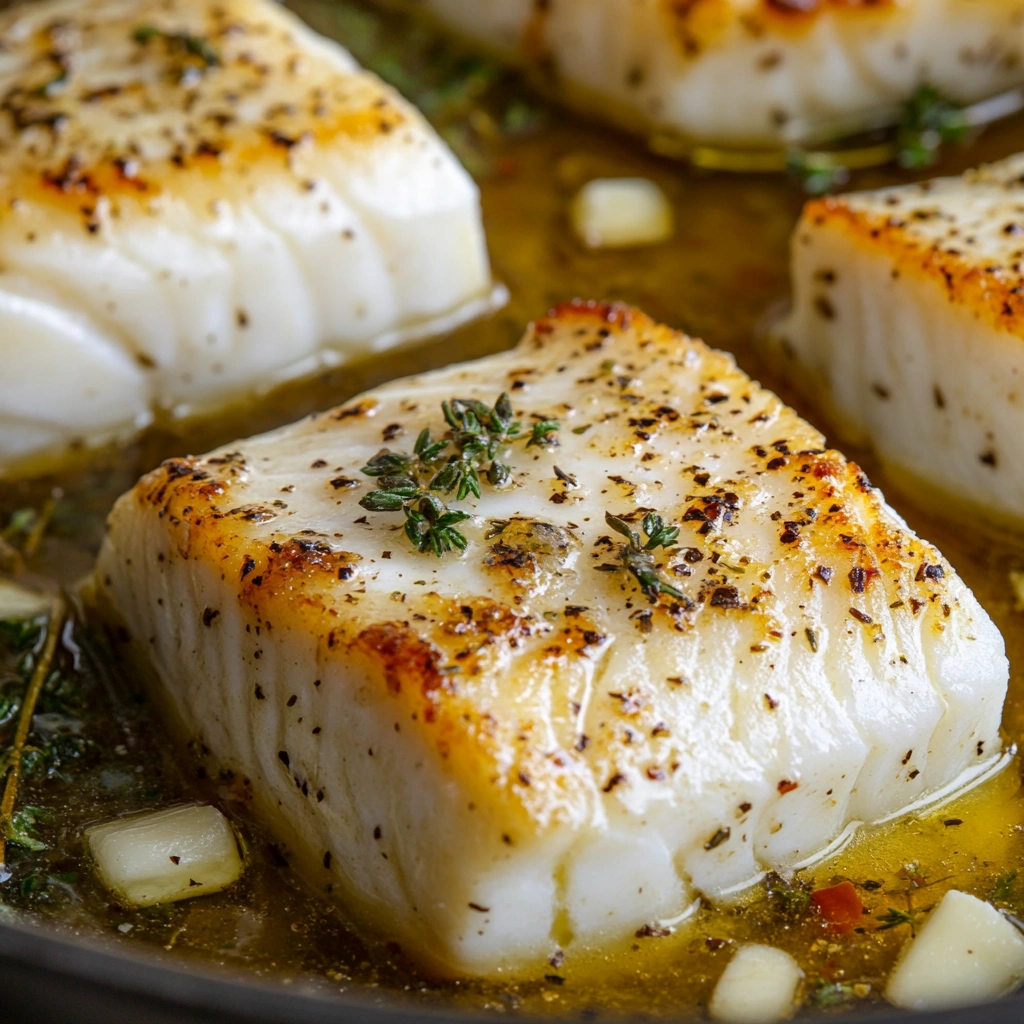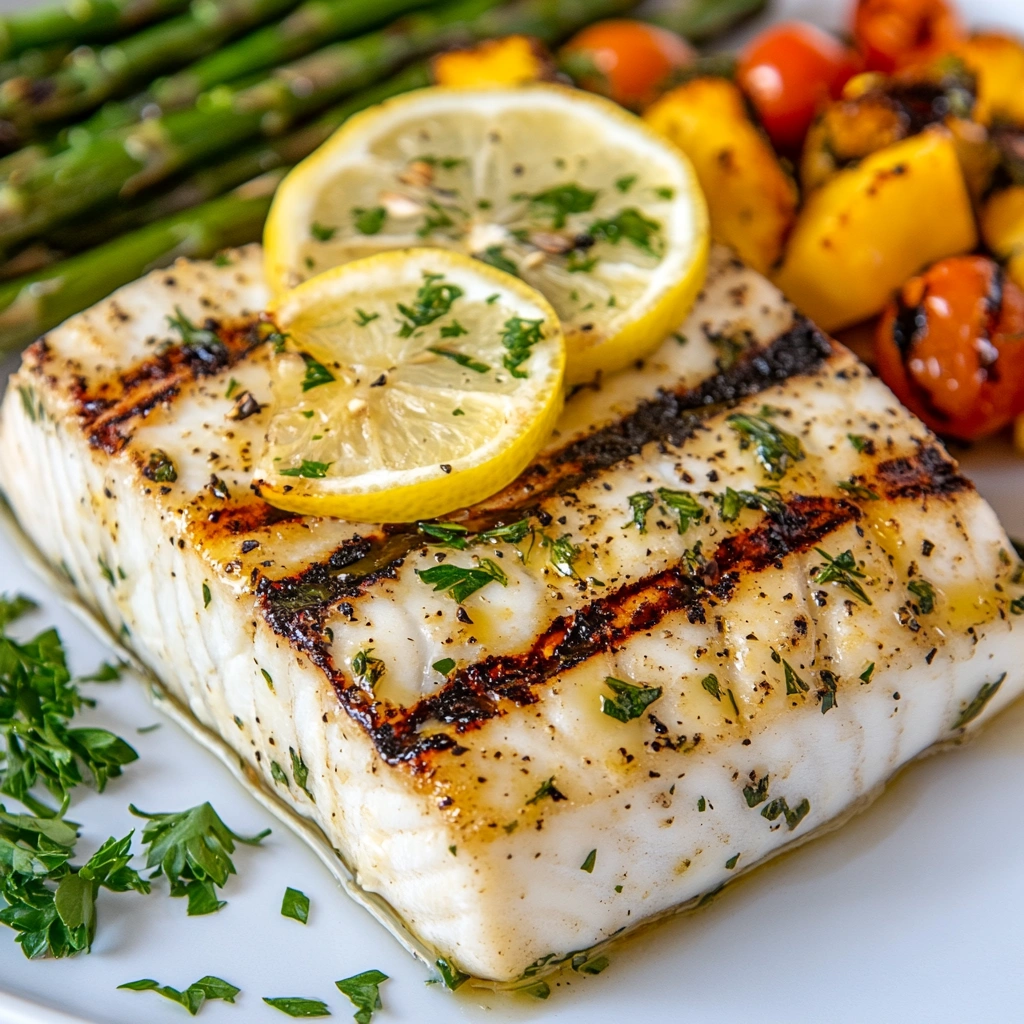Halibut, a versatile and mild-tasting fish, shines in a variety of cooking methods. If you’re asking how is halibut supposed to be cooked, you’re in the right place. Whether you’re grilling, pan-searing, baking, or poaching, halibut responds beautifully to different cooking styles. However, to cook it perfectly, you need to understand how to avoid common pitfalls, such as overcooking and drying it out.
Mastering these methods will help you never wonder again how halibut is supposed to be cooked.
Understanding Halibut: What Makes It Special
Before diving into the best cooking techniques, it’s essential to understand how halibut is supposed to be cooked based on its characteristics. Halibut has a firm, low-fat texture that makes it great for high-heat methods like grilling or pan-searing. On the other hand, it can dry out quickly if not cooked properly.
Why Halibut Dries Out Easily
Unlike fattier fish like salmon, halibut has less fat, which makes it prone to drying out. To prevent this, you need to monitor cooking times and temperatures carefully. Achieving the perfect internal temperature ensures your halibut stays tender and juicy.
Best Methods for Cooking Halibut: Techniques That Work
If you’re wondering how is halibut supposed to be cooked for the best results, these methods will guide you to success.
Grilling Halibut: How to Grill Halibut for Maximum Flavor
Grilling halibut adds a smoky flavor that enhances its natural taste. First, preheat your grill to medium-high heat (about 400°F). Lightly oil the grill grates to prevent sticking, and season the halibut fillets with olive oil, salt, pepper, and a squeeze of lemon.
- Cooking: Place the halibut on the grill, skin-side down. Cook it for 4-5 minutes per side, depending on the fillet’s thickness. Be sure to flip it carefully to avoid breaking the delicate fish.
Using a meat thermometer will help you monitor the internal temperature, ensuring it reaches 130°F to 135°F. Avoid overcooking by checking frequently, as halibut can dry out if left too long.
Pan-Searing Halibut: How to Get That Perfect Golden Crust

Pan-searing offers an excellent answer to how halibut is supposed to be cooked while achieving a crispy crust. Start by drying the fillets with paper towels and seasoning them generously with salt and pepper. Heat a tablespoon of olive oil in a skillet over medium-high heat.
- Cooking: Place the halibut fillets in the hot pan, searing one side for about 4-5 minutes. Flip the fish gently and cook for another 2-3 minutes until the fish reaches an internal temperature of 135°F.
For extra flavor, add butter, garlic, and herbs like thyme during the last minute of cooking. Basting the halibut with the infused butter creates a rich, delicious taste.
Baking Halibut: The Foolproof Method for Moist Fish

If you’re still wondering how halibut is supposed to be cooked without much effort, baking is one of the easiest methods. Baking halibut in the oven retains its moisture, especially if you add a bit of liquid to the dish.
- Preparation: Preheat your oven to 400°F. Place the fillets in a baking dish, drizzle them with olive oil, and season with salt, pepper, garlic, and fresh herbs.
- Cooking: Bake the fillets for 12-15 minutes, depending on thickness. Halibut should flake easily with a fork and reach 135°F internally when done.
For added flavor, consider serving baked halibut with a lemon butter sauce or herb vinaigrette. These sauces complement the fish’s delicate flavor while providing moisture.
Poaching Halibut: A Gentle Cooking Method

Poaching offers another gentle way to cook halibut, ensuring it stays moist. If you’re still asking how halibut is supposed to be cooked in a way that prevents drying out, poaching is a fantastic option.
- Preparation: In a shallow pan, heat a poaching liquid (such as fish broth, white wine, or water with lemon) until it reaches a gentle simmer. Add aromatic herbs like bay leaves, garlic, or thyme.
- Cooking: Submerge the halibut fillets in the liquid, and let them poach for about 7-10 minutes until they reach an internal temperature of 130°F.
Poaching keeps the fish tender and works well with light, flavorful sauces. Try serving poached halibut with a simple citrus vinaigrette for a refreshing meal.
Advanced Techniques: How Is Halibut Supposed to Be Cooked Using Sous Vide?
Sous vide is a precise method that answers how halibut is supposed to be cooked to achieve perfectly tender results. This method uses controlled water temperature to ensure even cooking throughout the fillet.
- Preparation: Season the halibut with salt, pepper, and your choice of herbs. Then, vacuum-seal the fillets in plastic bags.
- Cooking: Set your sous vide machine to 130°F for medium-rare halibut. Place the sealed bags in the water bath and cook for 30-40 minutes.
After sous vide cooking, quickly sear the fillets in a hot pan for about 1 minute on each side to develop a crispy exterior. This ensures a juicy interior with a perfect crust.
Avoid Common Mistakes: How to Cook Halibut Without Errors
When learning how halibut is supposed to be cooked, avoiding common mistakes is crucial to success.
- Overcooking the Fish: Halibut dries out quickly when overcooked. Use a thermometer to monitor the internal temperature closely.
- Under-seasoning: Halibut has a mild flavor that pairs well with bold seasonings. Don’t hesitate to use garlic, lemon, herbs, and butter.
- Skipping the Resting Period: After cooking, allow the halibut to rest for a couple of minutes to let its juices redistribute. This step ensures the fish stays moist.
By following these steps, you’ll consistently achieve excellent results and understand how halibut is supposed to be cooked every time.
FAQs: How Is Halibut Supposed to Be Cooked? Answers to Common Questions
Q: What is the ideal internal temperature for cooked halibut?
A: For perfectly cooked halibut, aim for an internal temperature of 130°F to 135°F. This range ensures the fish remains tender and moist.
Q: How can I keep halibut from drying out?
A: Monitor the cooking temperature and time carefully. Additionally, using moist cooking methods like poaching or baking with liquids can help retain moisture.
Q: Can I cook halibut from frozen?
A: While you can cook halibut from frozen, thawing it first ensures more even cooking and better texture.
Q: What herbs and seasonings go well with halibut?
A: Halibut pairs well with simple yet bold flavors such as garlic, lemon, dill, parsley, and thyme. Butter and olive oil enhance the richness of the fish.
Q: How long should I cook halibut?
A: The cooking time for halibut depends on the thickness of the fillet and the method used. Generally, halibut fillets take about 4-5 minutes per side when pan-searing or grilling. If baking, halibut typically takes 12-15 minutes at 400°F. Always check the internal temperature, which should reach 130°F to 135°F.
Q: What temperature should halibut be cooked to?
A: Halibut should be cooked to an internal temperature of 130°F to 135°F. This ensures the fish is cooked through but still moist and tender. Overcooking can lead to dryness, so using a meat thermometer is recommended.
Q: How can I tell if halibut is done without a thermometer?
A: You can tell if halibut is done by gently flaking it with a fork. The fish should turn opaque and easily flake apart, indicating that it’s cooked through. However, for the most accurate result, it’s best to use a thermometer.
Conclusion: How Halibut Is Supposed to Be Cooked for Perfect Results
Mastering how halibut is supposed to be cooked is about understanding its delicate nature and using the right techniques to bring out its best qualities. Whether you’re grilling, pan-searing, baking, or poaching, the key lies in controlling the temperature and cooking time to ensure your fish stays moist and tender.
Grilling halibut imparts a smoky flavor and gives the fish a beautiful char, but it’s important to oil the grates and cook at medium-high heat to avoid sticking or overcooking. Pan-searing, on the other hand, allows you to achieve a crispy crust while maintaining the halibut’s juicy interior. To enhance flavor, consider basting the fish with butter and herbs during the final minutes of cooking.
If you prefer a more hands-off method, baking halibut is a foolproof option. The gentle heat of the oven preserves the fish’s moisture, especially when paired with olive oil, garlic, and fresh herbs. For those looking to cook halibut in the healthiest way, poaching is ideal. This method locks in moisture and works beautifully with light broths or a white wine base.
For more advanced cooks, sous vide offers precision. It guarantees perfect doneness by allowing you to cook the halibut evenly at a controlled temperature, followed by a quick sear for added texture.
No matter which method you choose, always monitor the fish closely to avoid overcooking. Aim for an internal temperature of 130°F to 135°F, and let the halibut rest briefly after cooking to lock in the juices.
By understanding how halibut is supposed to be cooked, you can enjoy perfectly cooked fish every time—flaky, flavorful, and never dry. Now that you’ve learned these techniques, you’re ready to elevate your halibut dishes to restaurant-quality perfection.


